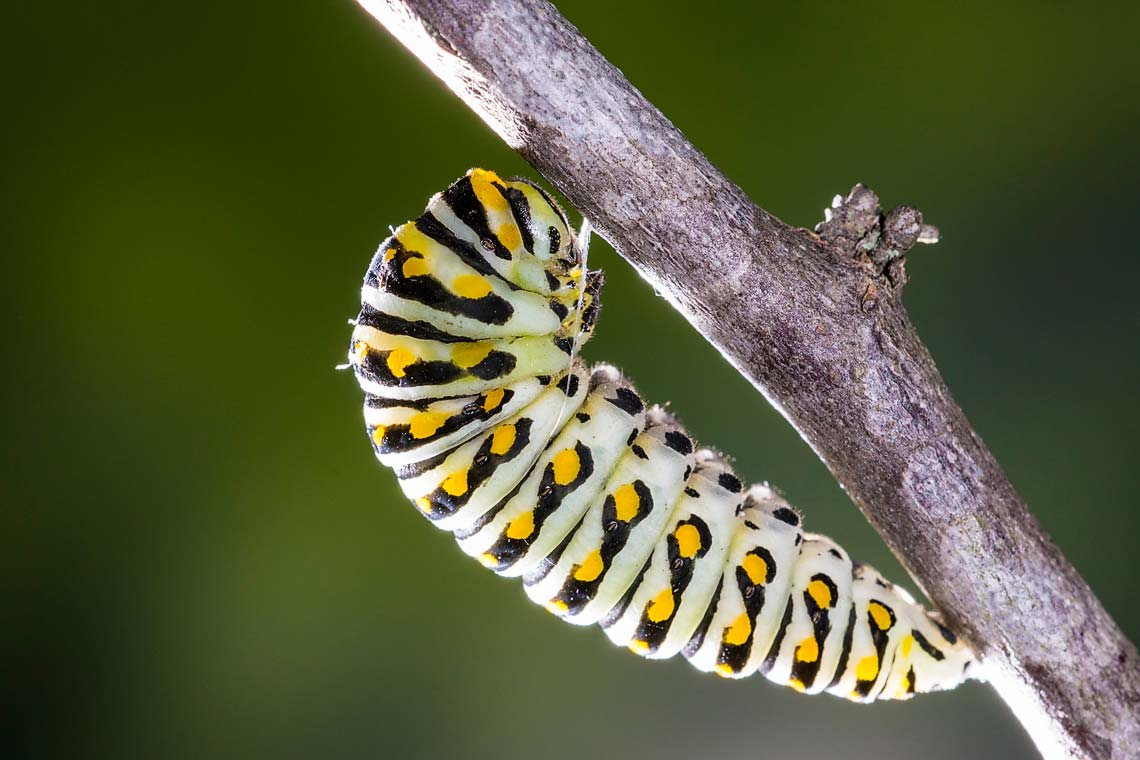
A caterpillar becomes a graceful winged moth or butterfly through a remarkable transformation called metamorphosis. The fact is many insects undergo this change.
Every insect begins life in a tiny egg. Some, such as the grasshopper, emerge as miniature replicas of the adults. Each grows to adult size by molting its outer skin whenever the skin becomes too small. The old shell splits open and a larger version of the insect crawls out.
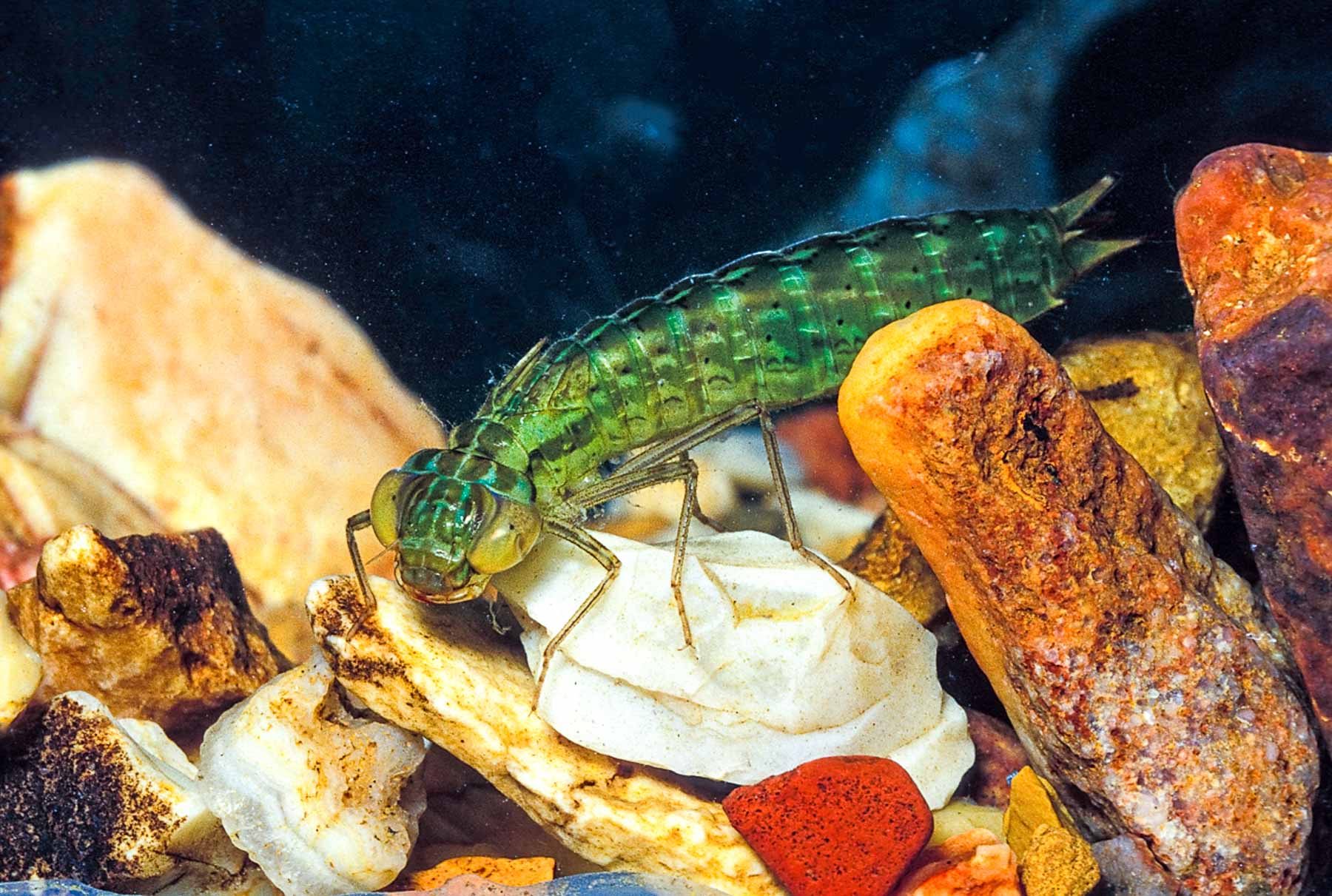
Dragonfly Nymph
A second pattern of insect growth involves a nymph. An egg hatches into a nymph that resembles the adult, but is not quite the same. Dragonfly nymphs have gills at first, but lose them when they molt and transform into air-breathing adults.
Watch the life cycle of a Goatweed Leafwing butterly
In the most common type of insect growth, the egg hatches into a larva that does not resemble its adult form in either lifestyle or appearance. Maggots change into flies, grubs become beetles, and caterpillars transform into butterflies and moths.
Before the larva transforms into an adult, it enters a state of suspended animation called the pupal stage. At that time, the larva is outwardly motionless, while inside its body changes dramatically.
How Much Do You Know About Dragonfly Nymphs?
- Dragonfly nymphs are aquatic, usually drab, with 6 legs, large eyes, and small wing buds on the back of the thorax.
- Their gills are located inside the rectum.
- They breathe by drawing water in and out of their hind end. By forcefully expelling this water, the animal can move quickly in a form of jet propulsion.
- The eyes are compound, large, adjoin each other and nearly cover the head. The antennae are short.
- The six legs are poor for walking but good for perching.
For more on the dragonfly nymph, visit MDC’s Field Guide.
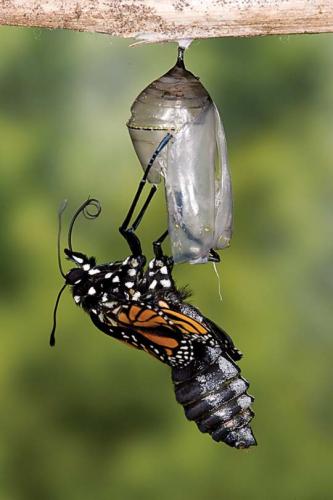
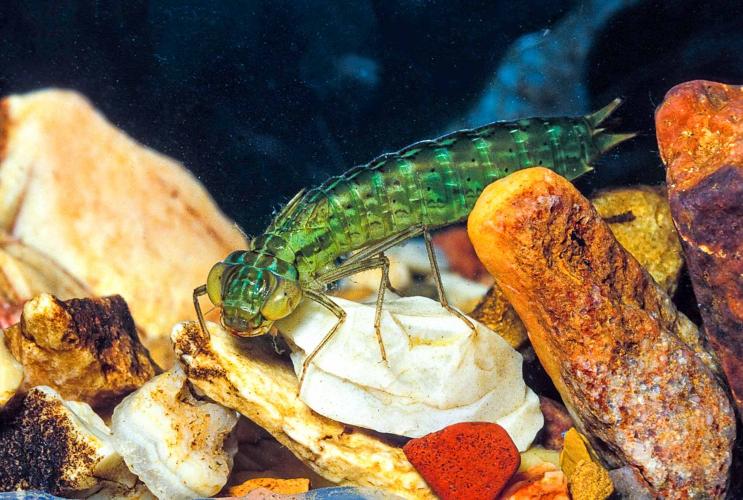
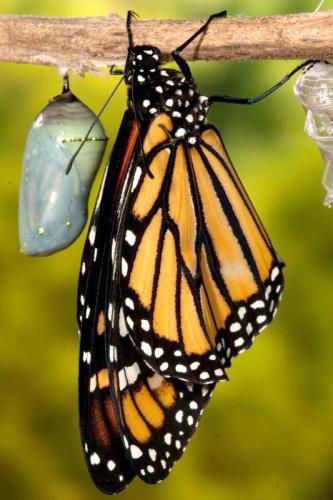
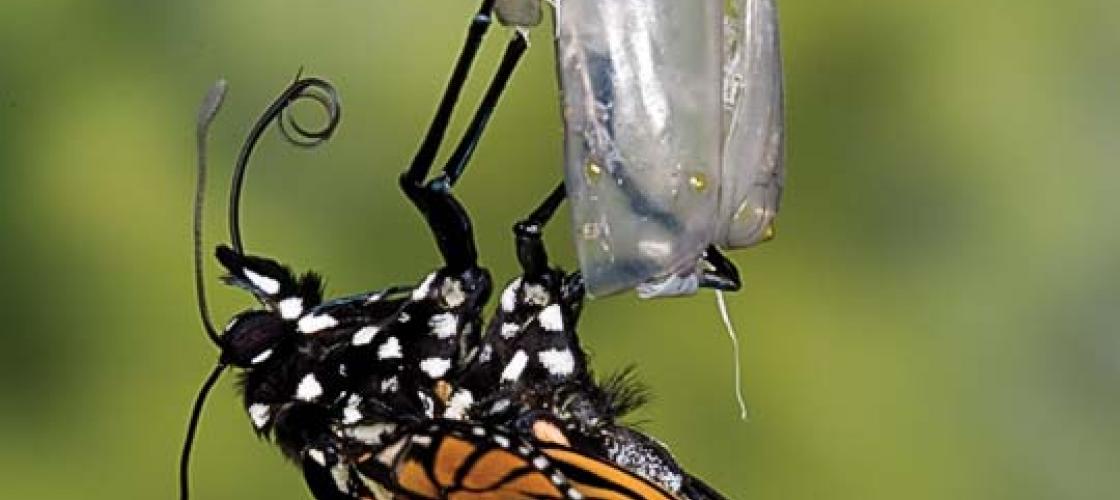
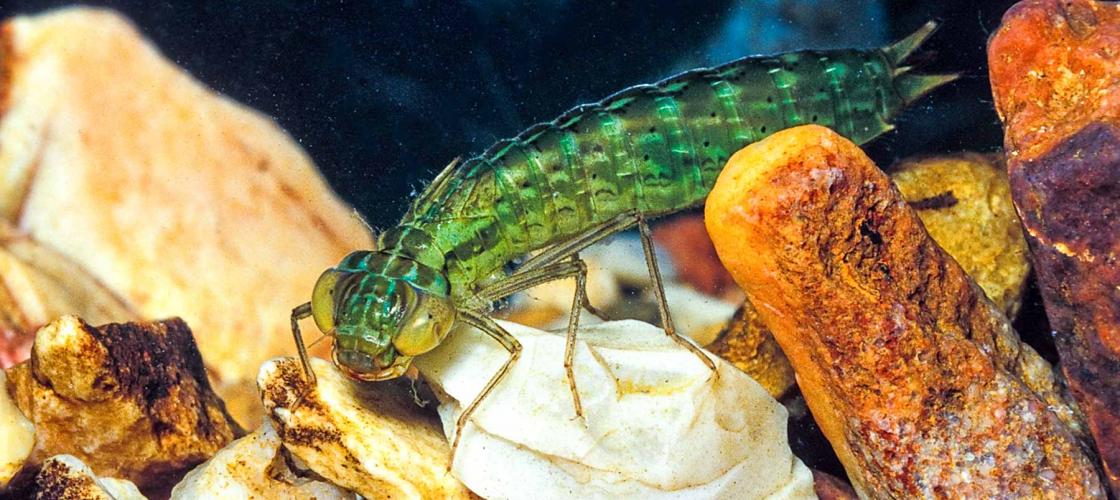
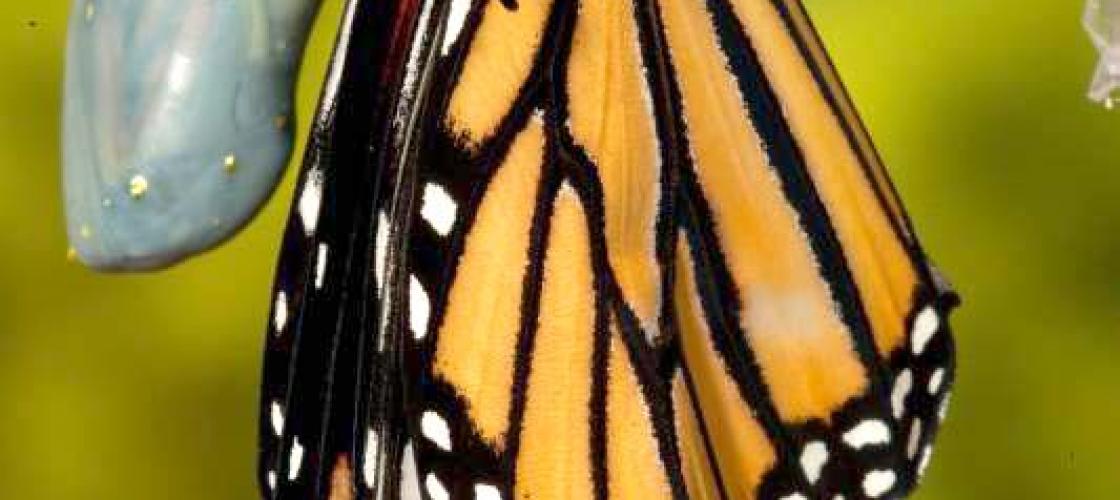
Recent Posts
























